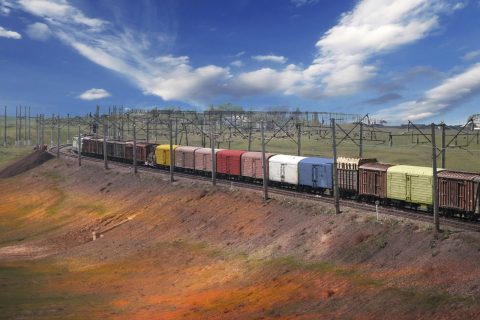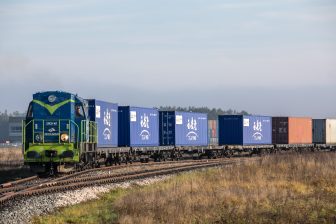
Global rail freight numbers increased in 2016
According to a report published by research firm Marketline, the global rail freight market valued 160 billion Euros in 2016, indicating a growth of 0,5 per cent compared to the previous year. This growth was largely driven by the rail freight sector in Asia-Pacific (APAC) and Europe. Although marginal, the increase marks a turning point as global freight numbers in 2015 had declined by 0,4 per cent, according to the same company.
APAC-Europe
Asia-Pacific and Europe contribute to most of the growth with a fueling demand and major investments from China, explained Marketline. “The Chinese government is currently supporting the One Belt One Road (OBOR) project, which seeks to increase connectivity between the Eurasian region and China”, Nicholas Wyatt, Project Leader for MarketLine explained.
“DB Cargo has estimated that because of Chinese investments, the volume of goods transported between China and Germany will grow to 100,000 twenty-foot equivalent (TEU) by 2020, up from 40,000 TEU in 2016. This will give a boost to the rail freight sector in both countries as well as the wider region, and explains why volume figures are expected to increase more robustly in the coming years.”
Silk Road growth
Indeed, various countries that are strategically located on the Silk Road published promising growth numbers of performances in the first half of 2017. China’s rail freight volumes rose with 15.3 per cent year-on-year to 1,82 billion tonnes, reported the China Daily. Similarly, rail freight volumes in Belarus in this period increased with 14,9 per cent to 68.442 million tonnes, according to Belarusian Railways.
Kazakhstan’s national railway KTZ revealed that 5 million tonnes of rail freight travelled between China and Kazakhstan in the first six months of 2017, an increase of 26 per cent compared to the same period last year and freight transportation on the Latvian railway infrastructure amounted to 24,367 tonnes in this period, a year-on-year growth of 1,2 per cent.
USA
In stark contrast, rail freight numbers in the United States continued on a steep decline, according to Marketline. Wyatt commented: “2015 and 2016 were exceptionally hard years for rail freight in the United States. This is attributable to falling demand for commodities such as oil and coal, which have traditionally relied heavily on rail freight transportation. The country has built more pipelines, an increasingly attractive means through which to transport oil and gas, thereby reducing reliance and demand for rail freight. This really hit in 2016, when the market’s value decreased by over 8 per cent.”





